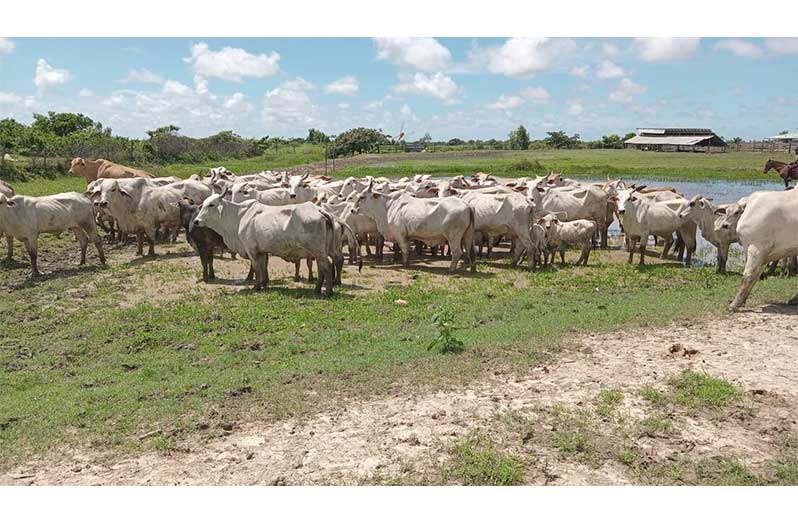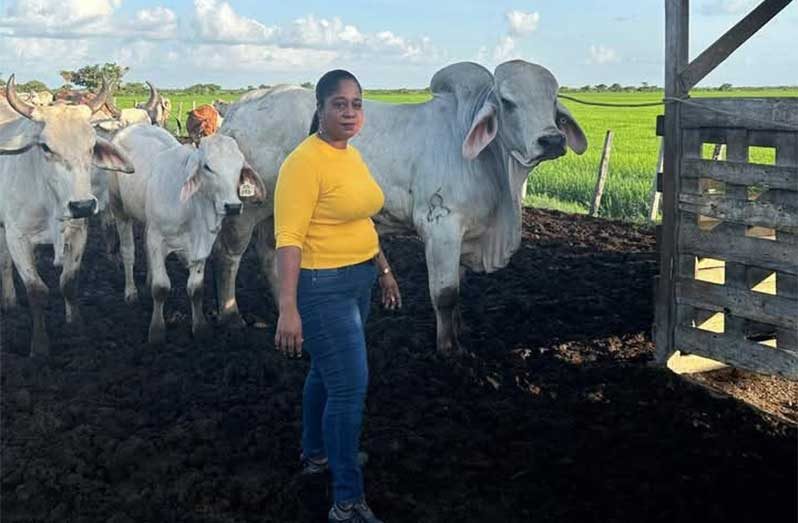A TRANSFORMATIVE agricultural initiative backed by President Dr. Irfaan Ali’s administration is yielding strong returns for Guyana’s cattle industry, with farmers across Region Five (Mahaica-Berbice) reporting notable improvements in productivity and herd quality.
At the forefront of this revival is the Bull Rotation Programme, a flagship effort led by the Guyana Livestock Development Authority (GLDA) under the Ministry of Agriculture. The programme is designed to improve the genetic makeup, resilience, and productivity of cattle herds nationwide—critical components of Guyana’s contribution to CARICOM’s “25 by 2025 plus 5” food security agenda.
Originally launched in 2012, the Bull Rotation Programme reached a major milestone in October 2022 with the importation of 64 elite breeding bulls—a strategic intervention now widely seen as a game-changer for the local beef sector.
While benefits are being seen countrywide, Region Five, considered Guyana’s livestock heartland—stands out as a leading success story. Despite being the country’s second-smallest administrative region, Region 5 has shown significant growth. According to the GLDA, the Region’s cattle population rose by 4.3% in 2024, reaching nearly 120,000 animals across 1,503 herds. Of the 376 calves recorded under the programme that year, over 250 were born in Region Five, underscoring the strong adoption and effectiveness of the initiative among local farmers.
Among the success stories is Dianne Cheefoon, Region Five’s leading female cattle rancher. She credits the GLDA’s programme with transforming her operations.
“Before receiving the Brahman bull, I struggled to achieve profitable slaughter weights due to inbreeding and poor genetics,”
Cheefoon explained. Since joining the programme in 2022 and receiving continuous technical support and training from GLDA officers, she has seen marked improvements. “With better genetics, the animals are gaining weight faster, and the entire operation is now more profitable,” she said, proudly noting the production of over 51 offspring from the imported bull.
Similarly, Satesh Persaud, manager of Inshanally Bacchus’s Ranch on the right bank of the Abary River, shared how the initiative revolutionised his business.
“When we started between 2008 and 2012, we had over 1,000 Creole cows, but growth was slow,” Persaud said. “Then in 2013, we were introduced to the Bull Rotation Programme and received a Brahman bull. That changed everything.”
Though the ranch has since reduced herd size for sustainability, the improved animal quality has dramatically boosted profitability. “We used to sell ten animals to earn what we now make from one improved calf,” he added. Persaud credits the ranch’s success to both traditional knowledge and the consistent guidance of GLDA staff, especially CEO Dr. Dwight Walrond, Extension Officer Mr. Dilchand, and the Region Five field team.
The breeding strategy focuses on crossbreeding local cows with Brahman Zebu bulls—prized for their heat tolerance, tick resistance, and efficiency in tropical environments. In the next phase, GLDA is promoting composite breeds like Brangus and Beefmaster, which combine the strengths of multiple breeds to ensure consistency, manageability, and resilience.
According to GLDA officials, the programme’s impact has been substantial: farmers are now reporting higher carcass yields, better reproductive performance, and improved herd health—all of which enhance profitability and national food security.
“The Bull Rotation Programme is not just about better cattle,” said Dr. Dwight Walrond, CEO of GLDA. “It’s about empowering farmers, modernising agriculture, and positioning Guyana as a leader in regional food production.”
This initiative supports President Ali’s vision of transforming Guyana into a self-sufficient, export-ready agricultural powerhouse and aligns seamlessly with CARICOM’s “25 by 2025 plus 5” target—to reduce regional food imports by 25% by 2025 and expand productivity over the next five years.
With continued investment and farmer participation, the Bull Rotation Programme is expected to solidify Guyana’s place as a premium beef supplier in the Caribbean, boosting regional food security and delivering long-term economic gains for local livestock producers.



.jpg)








